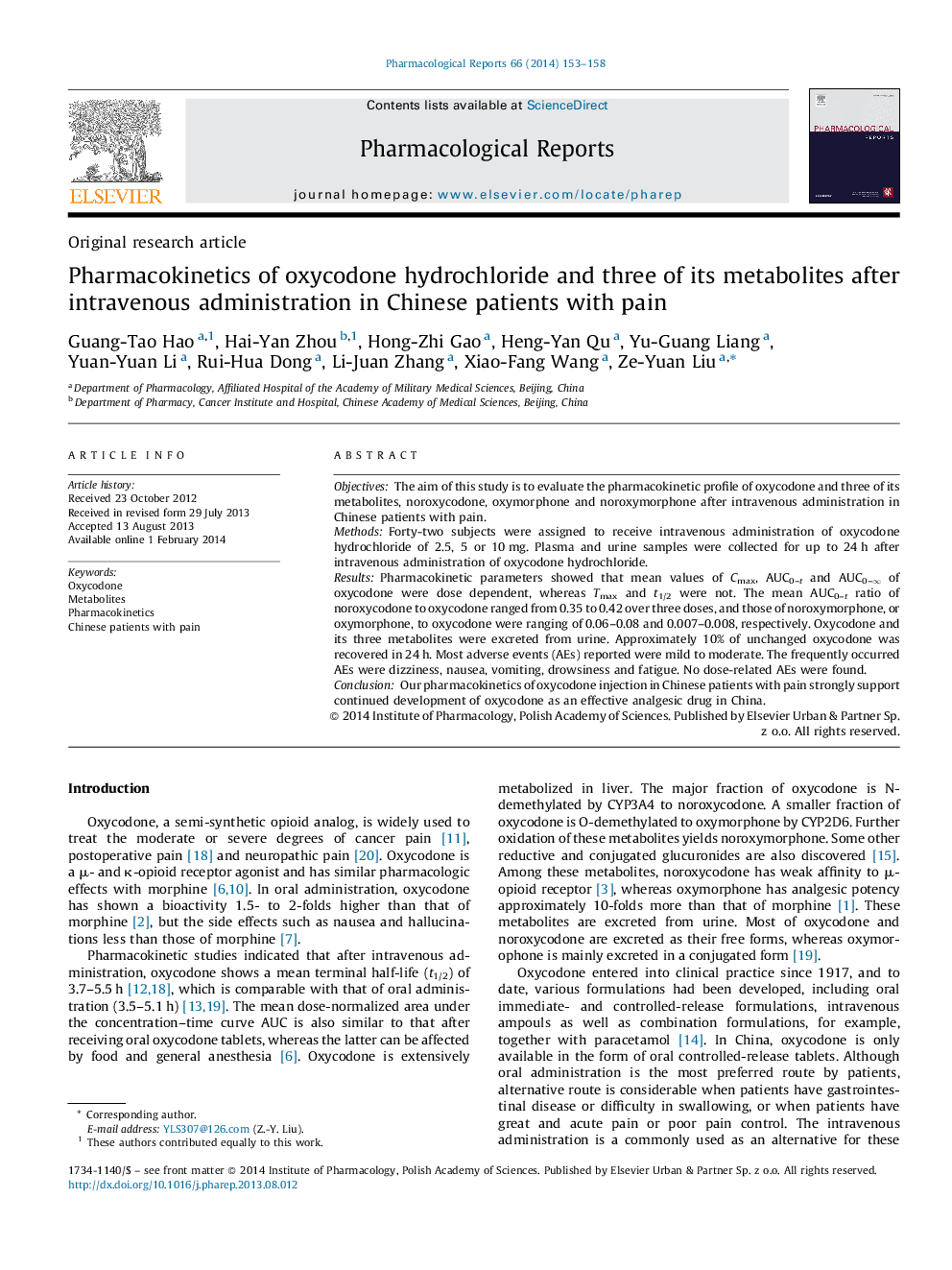| Article ID | Journal | Published Year | Pages | File Type |
|---|---|---|---|---|
| 2010633 | Pharmacological Reports | 2014 | 6 Pages |
ObjectivesThe aim of this study is to evaluate the pharmacokinetic profile of oxycodone and three of its metabolites, noroxycodone, oxymorphone and noroxymorphone after intravenous administration in Chinese patients with pain.MethodsForty-two subjects were assigned to receive intravenous administration of oxycodone hydrochloride of 2.5, 5 or 10 mg. Plasma and urine samples were collected for up to 24 h after intravenous administration of oxycodone hydrochloride.ResultsPharmacokinetic parameters showed that mean values of Cmax, AUC0–t and AUC0–∞ of oxycodone were dose dependent, whereas Tmax and t1/2 were not. The mean AUC0–t ratio of noroxycodone to oxycodone ranged from 0.35 to 0.42 over three doses, and those of noroxymorphone, or oxymorphone, to oxycodone were ranging of 0.06–0.08 and 0.007–0.008, respectively. Oxycodone and its three metabolites were excreted from urine. Approximately 10% of unchanged oxycodone was recovered in 24 h. Most adverse events (AEs) reported were mild to moderate. The frequently occurred AEs were dizziness, nausea, vomiting, drowsiness and fatigue. No dose-related AEs were found.ConclusionOur pharmacokinetics of oxycodone injection in Chinese patients with pain strongly support continued development of oxycodone as an effective analgesic drug in China.
